Related Research Articles

Field Marshal Hugh Gough, 1st Viscount Gough, was a senior British Army officer. After serving as a junior officer at the seizure of the Cape of Good Hope during the French Revolutionary Wars, Gough commanded the 2nd Battalion of the 87th Regiment of Foot during the Peninsular War. After serving as commander-in-chief of the British forces in China during the First Opium War, he became Commander-in-Chief, India and led the British forces in action against the Marathas defeating them decisively at the conclusion of the Gwalior campaign and then commanded the troops that defeated the Sikhs during both the First Anglo-Sikh War and the Second Anglo-Sikh War.
Major-General William John Vousden, was a Scottish officer in the Indian Army, and recipient of the Victoria Cross, the highest and most prestigious award for gallantry in the face of the enemy that can be awarded to British and Commonwealth forces.

Admiral Charles Ramsay Arbuthnot was an officer of the British Royal Navy.

Major General Walter Adams Coxen was a senior Australian Army officer in the First World War. In April 1930 Coxen was promoted to the position of Chief of the General Staff. He retired in 1931.
Major-General Algernon Philip Yorke Langhorne, CB, DSO, MC was an officer in the British Army.
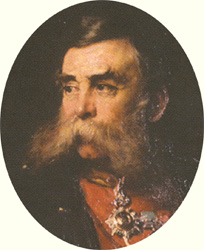
Field Marshal Sir John Lintorn Arabin Simmons was a British Army officer. Early in his career he served as Inspector of Railways, Secretary of the Railways Commission and then Secretary of the Railway Department under the Board of Trade. He went on to be British Commissioner with the Turkish Army providing advice to General Omar Pasha during the Crimean War. He assisted the Turks at the defence of Silistra and then led them at the Battle of Giurgevo before landing with them at the Battle of Eupatoria and remaining with them for the Siege of Sevastopol. After that he became British Consul in Warsaw, Commander, Royal Engineers at Aldershot and then Director of the Royal Engineer Establishment in Chatham. He went on to be Lieutenant-Governor of the Royal Military Academy and subsequently Governor of the Academy. His last appointments were as Colonel Commandant of the Royal Engineers, as Inspector General of Fortifications and then as Governor of Malta.
Lieutenant-Colonel Pelham George von Donop was a British Army officer in the Royal Engineers and later Chief Inspecting Officer of Railways. He represented the Royal Engineers at association football, appearing in two FA Cup Finals, and also made two appearances for the England national football team.

Brigadier-General Sir William Henry Manning, was a British Indian Army officer and colonial administrator.

Melbourne railway station was a station at Kings Newton that served the adjacent town of Melbourne, Derbyshire, England.
Lieutenant-General Henry George Hart (1808–1878) was a British Army officer who was best known as the author, editor, and proprietor of Hart's Army List, an unofficial publication recording army service.
Major-General Alexander Montagu Spears Elsmie CB CMG was a British Indian Army officer.
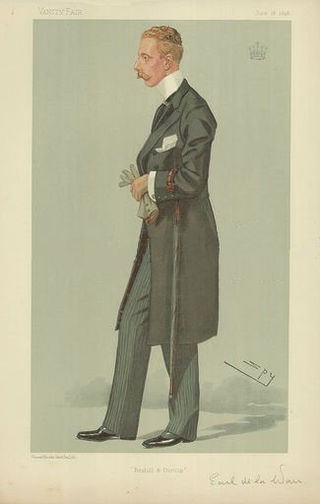
Major Gilbert George Reginald Sackville, 8th Earl De La Warr JP, DL, styled The Honourable Gilbert Sackville until 1890 and Viscount Cantelupe between 1890 and 1896, was a British landowner, politician and soldier.
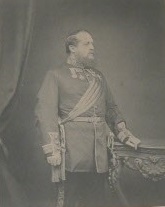
General John Yorke CB (1814–1890) was a British Army officer.
Admiral Sir Charles Holcombe Dare KCMG CB MVO was an English Royal Navy officer. He commanded several ships and shore establishments before and during World War I, and was knighted by King George V.
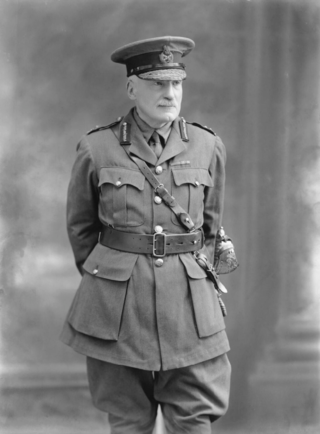
Major-General Sir Richard Mathews Ruck was a British Army officer who served with the Royal Engineers, spending most of his career in the Submarine Mining Service, before becoming the Director of Fortifications and Works. He was a keen amateur sportsman, who played football for the Royal Engineers, helping them to victory in the 1875 FA Cup Final.
Lothian Kerr Scott was a Scottish first-class cricketer, British Army officer and military engineer.
Gilbert Scott Wright was an English painter. Like his older brother George Wright, he painted hunting and coaching scenes, as well as horse portraits. Wright was one of a family of seven children, five of whom were professional artists, either principally as painters, or as illustrators.
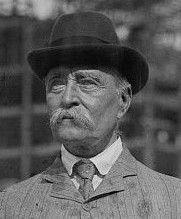
Colonel Sir Augustus Charles Frederick FitzGeorge, was a British Army officer and a relative of the British royal family. FitzGeorge was born in 1847 to Prince George, Duke of Cambridge, and his wife Sarah Fairbrother. His parents' marriage contravened the Royal Marriages Act 1772 and therefore invalid, thus FitzGeorge was ineligible to inherit the Dukedom of Cambridge.
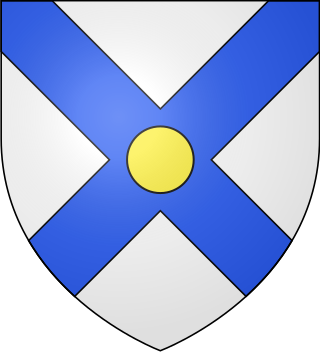
Charles Alexander Yorke, 8th Earl of Hardwicke was a British peer.
Colonel Robert Hamilton Vetch CB was a British Army officer and biographer who contributed to the Encyclopædia Britannica and the Dictionary of National Biography.
References
- ↑ "Military Divorce Suit" . Manchester Evening News. England. 18 June 1891. Retrieved 18 December 2022– via British Newspaper Archive.
- ↑ "The King's Investiture" . Evening Standard. England. 6 July 1904. Retrieved 18 December 2022– via British Newspaper Archive.
- ↑ "New Year Honours" . Banbury Advertiser. England. 2 January 1913. Retrieved 18 December 2022– via British Newspaper Archive.
- 1 2 UK Retail Price Index inflation figures are based on data from Clark, Gregory (2017). "The Annual RPI and Average Earnings for Britain, 1209 to Present (New Series)". MeasuringWorth. Retrieved 11 June 2022.
- ↑ "No. 23458". The London Gazette . 12 January 1869. p. 164.
- ↑ "No. 24999". The London Gazette . 26 July 1881. p. 3679.
- ↑ "No. 25743". The London Gazette . 30 September 1887. p. 5321.
- ↑ "G.W.R. Director's Death" . Derby Daily Telegraph. England. 11 December 1930. Retrieved 18 December 2022– via British Newspaper Archive.
- ↑ "Petition of Right" . Evening Standard. England. 10 February 1915. Retrieved 18 December 2022– via British Newspaper Archive.